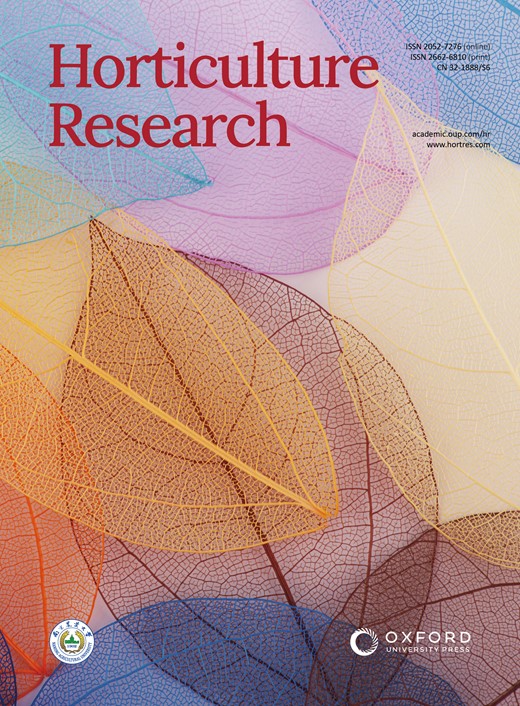The vacuolar transporters MaMATE11 and MaMATE14 affect blue flower coloration in grape hyacinth (Muscari)
IF 8.5
1区 农林科学
Q1 Agricultural and Biological Sciences
引用次数: 0
Abstract
The development of blue flower coloration involves the biosynthesis, transport, and accumulation of flavonoids in petal epidermal cells. Although the mechanisms of flavonoid biosynthesis and regulation are well understood, much less is known about the molecular basis of vacuolar anthocyanin/flavonoid sequestration. Here, we identified two tonoplast-localized MATE transporters, MaMATE11 and MaMATE14, that participate in flavonoid transport and influence the blue color of grape hyacinth petals. In vitro transport experiments revealed that both proteins transported a range of flavonoid substrates, with a preference for malonylated anthocyanins, but differed in their substrate specificity and kinetic parameters. Both MaMATE11 and MaMATE14 could complement the anthocyanin-deficient phenotype of the Arabidopsis AtDTX35 mutant, and silencing of either gene by RNA interference significantly reduced anthocyanin accumulation in petals of grape hyacinth. Expression of MaMATE11 and MaMATE14 was directly activated by the anthocyanin-biosynthesis-related transcription factors MaMybA and MaAN2, respectively, establishing a coordinated anthocyanin synthesis–transport module. These findings provide insight into mechanisms of floral coloration and flavonoid translocation in blue-pigmented species and identify valuable target genes for molecular breeding of ornamental flower colors.空泡转运蛋白MaMATE11和MaMATE14对葡萄风信子蓝花颜色的影响
花瓣表皮细胞中黄酮类化合物的合成、转运和积累是蓝花形成的主要过程。虽然类黄酮的生物合成和调控机制已经很清楚,但对液泡花青素/类黄酮封存的分子基础知之甚少。本研究中,我们鉴定了两种定位于细胞体的MATE转运蛋白MaMATE11和MaMATE14,它们参与黄酮类物质的转运并影响葡萄风信子花瓣的蓝色。体外转运实验表明,这两种蛋白都能转运一系列类黄酮底物,并优先转运丙二酰化花青素,但在底物特异性和动力学参数上存在差异。MaMATE11和MaMATE14都能弥补拟南芥AtDTX35突变体的花青素缺陷表型,通过RNA干扰沉默任意一个基因都能显著减少葡萄风风莲花瓣中花青素的积累。MaMATE11和MaMATE14的表达分别被花青素生物合成相关转录因子MaMybA和MaAN2直接激活,建立协调的花青素合成-转运模块。这些发现为进一步了解蓝色素植物的花色和类黄酮易位机制提供了依据,并为观赏花卉花色分子育种找到了有价值的靶基因。
本文章由计算机程序翻译,如有差异,请以英文原文为准。
求助全文
约1分钟内获得全文
求助全文
来源期刊

Horticulture Research
Biochemistry, Genetics and Molecular Biology-Biochemistry
CiteScore
11.20
自引率
6.90%
发文量
367
审稿时长
20 weeks
期刊介绍:
Horticulture Research, an open access journal affiliated with Nanjing Agricultural University, has achieved the prestigious ranking of number one in the Horticulture category of the Journal Citation Reports ™ from Clarivate, 2022. As a leading publication in the field, the journal is dedicated to disseminating original research articles, comprehensive reviews, insightful perspectives, thought-provoking comments, and valuable correspondence articles and letters to the editor. Its scope encompasses all vital aspects of horticultural plants and disciplines, such as biotechnology, breeding, cellular and molecular biology, evolution, genetics, inter-species interactions, physiology, and the origination and domestication of crops.
 求助内容:
求助内容: 应助结果提醒方式:
应助结果提醒方式:


